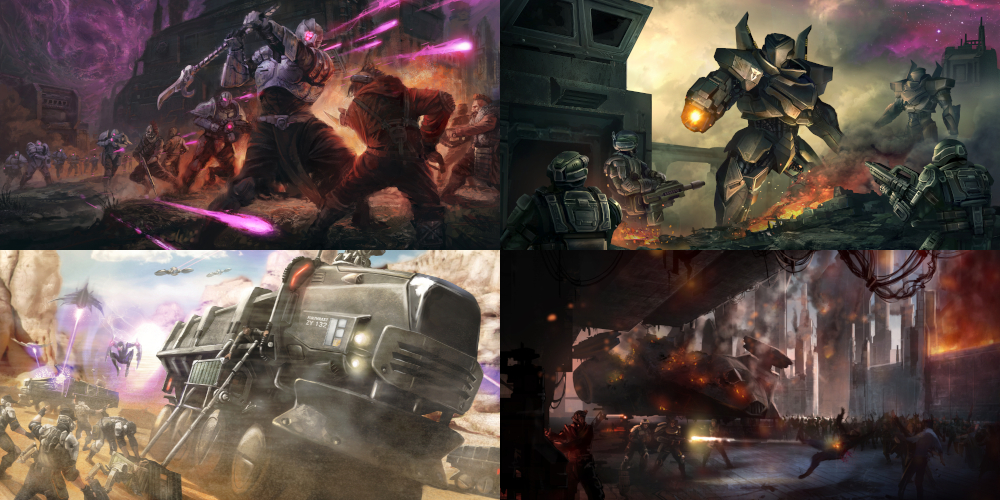Modeling Spotlight: Remnant Militus Battlesuit
Posted on Monday Apr 15, 2019 at 05:00pm in Tutorials
- by Iain Wilson
This month saw the release of a new faction, and a fantastic new multi-part, plastic kit for Maelstrom's Edge, in the form of the Artarian Remnant's Militus battlesuit. For this week's modeling article, I thought I would take a closer look at this kit and see what I could make with it.
The Militus kit comes with a single plastic frame, which includes one battlesuit, two each of the different ranged weapon options, fist and reflex shield options, two different shoulder pad options, two different backpack options, and more heads than you can poke a shock baton at, to allow for some very easy customisation between your different suits.
The Militus is fully articulated, with ball joints at ankles, knees, hips, elbows and shoulders, which allows for a wide range of posing options. The ranged weapons also have a multi-part gimble arrangement which allows both arm-mounted and shoulder-rig weapons to be positioned just how you want them.
As an alternative to the standard shoulder rig, you can leave the vertical arm off and flip the weapon over, attaching the gimbal directly to the shoulder pad.
As a handy extra, the connection point for the weapons onto the gimbal is a very snug fit, which actually allows you to leave the weapon unglued and just push them into place, so that you can switch between weapons as desired between games. Likewise, while the forearm-and-hand option uses a different upper arm to the ranged weapons, the shoulder joint is a tightly fitting ball and socket joint, so if you glue the shoulder pad on to the torso without gluing the arm, you can carefully wiggle the arms in and out of the shoulder socket to swap them.
The saw blades on the above suit are not from this kit, but came from a Warhammer 40000 ork vehicle, used here just because I thought it looked awesome!
The backpack options (a field generator and a jump pack) also slot on, fitting neatly over the suit's back. These aren't quite as snug as the shoulders, but you could easily leave them unglued and attach them when you want them with a little blue-tac or similar poster adhesive.
The fantastic thing about plastic, of course, is that it is simple to modify. So if the already wide range of posing available to the suit doesn't quite get it where you want it, it's an easy job to trim the joints a little to push them out even further. The below suit was posed by removing the top edges of the thigh armour plates, trimming the edges of the hip socket and leaving off the triangular piece that fits into the back of the shin.
Lorican Champions are highly individual souls, and love to customise their suits. For this reason, the frame includes a bunch of different heads, and we will be releasing a resin upgrade pack to add some extra options in the near future. You can also look at other 28mm resin add-ons for more distinctive customisation - the heads on the suits are more or less human-sized, although you may need to fill the neck socket with some putty. The below suit was customised with an assortment of resin parts I had laying around from an old grab bag. His weapon drone (representing a shoulder mounted weapo, rules-wise) was made from a chopped up jump pack.
Finally, you're likely to wind up with a bunch of extra heads after you have finished building your suits. As mentioned above, these are human-sized, so that opens up all sorts of potential for customising your troops from other factions!
What do you have planned for your Militus suits? Feel free to pop along and share your work, or ask any Maelstrom's Edge- or hobby-related questions on the Comm Guild Facebook page!
You can pick up the Militus suit along with the rest of the Maelstrom's Edge model range from the webstore here.
For other Maelstrom's Edge modeling articles, including tutorials and walkthroughs of a wide range of different building and miniature projects, check out the Hobby section of the Maelstrom's Edge website here.
Tags: conversion militus model modeling remnant spotlight tutorial walkthrough
